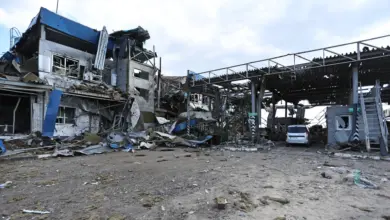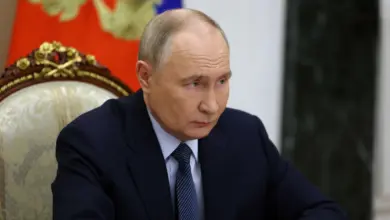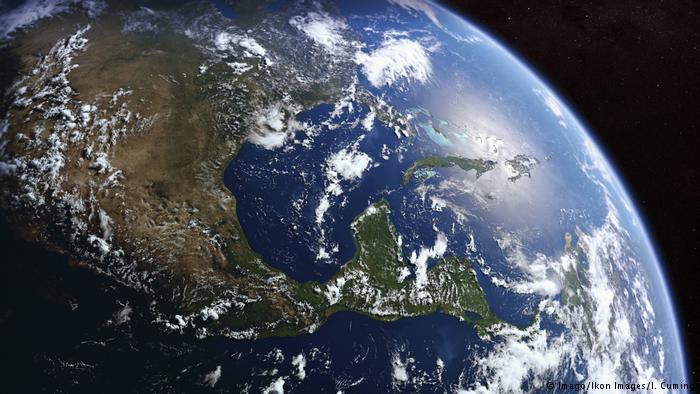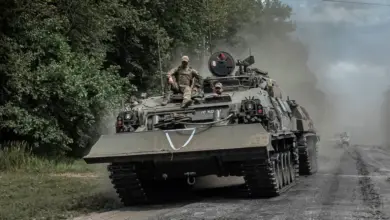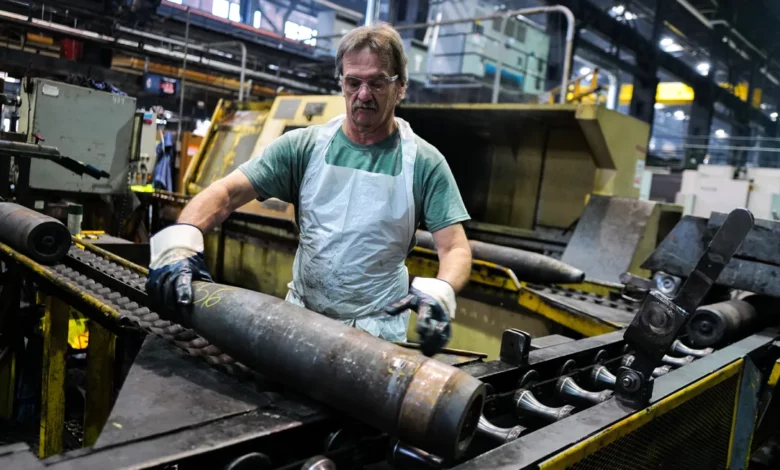
The situation on the eastern front has “worsened significantly,” the military’s top commander Oleksandr Syrskyi said a few days ago – a message backed up by video evidence, analysts, and interviews conducted by CNN with Ukrainian soldiers.
As the United States Congress prepares for a crucial weekend vote that could unlock $60bn of military aid for Ukraine, frontline troops find themselves withdrawing from key terrain, or getting pounded from the air as they try to hold on to important towns.
A key location is the large village of Ocheretyne, which sits on a ridge line to the northwest of Avdiivka, an industrial town captured by Russia in February. Higher ground is typically prized for being easier to defend.
DeepState, a Ukrainian organization which monitors battlefield developments daily, assesses a series of Russian advances in recent days along the railway line east into the village – about 4.5 kilometers (nearly 3 miles) in total. The group published drone video showing what it said were Russian soldiers in a trench near the railway line – visual confirmation of their advance.
Ahead of the encroaching Russian forces, Ukrainian volunteers have been evacuating civilians from Ocheretyne and other villages, posting videos on social media showing older residents leaving badly destroyed apartment buildings, along with their pets, and with belongings packed into cardboard boxes. As they leave, multiple explosions can be heard in the distance.
Advances into Ocheretyne are also being reported by Russian military bloggers, as well as into nearby Novokalynove – about 8 kilometers (5 miles) to the east – threatening to overwhelm a part of Ukraine’s defensive lines in the eastern Donetsk region.
“The large fortification between Ocheretyno and Novokalynovo may soon be in [Russian] hands. Assault groups have already entered Novokalynovo from the southeast and continue to advance,” one Russian military blogger, Boris Rozhin, wrote on Telegram on Thursday afternoon, using the Russian spelling for the two settlements.
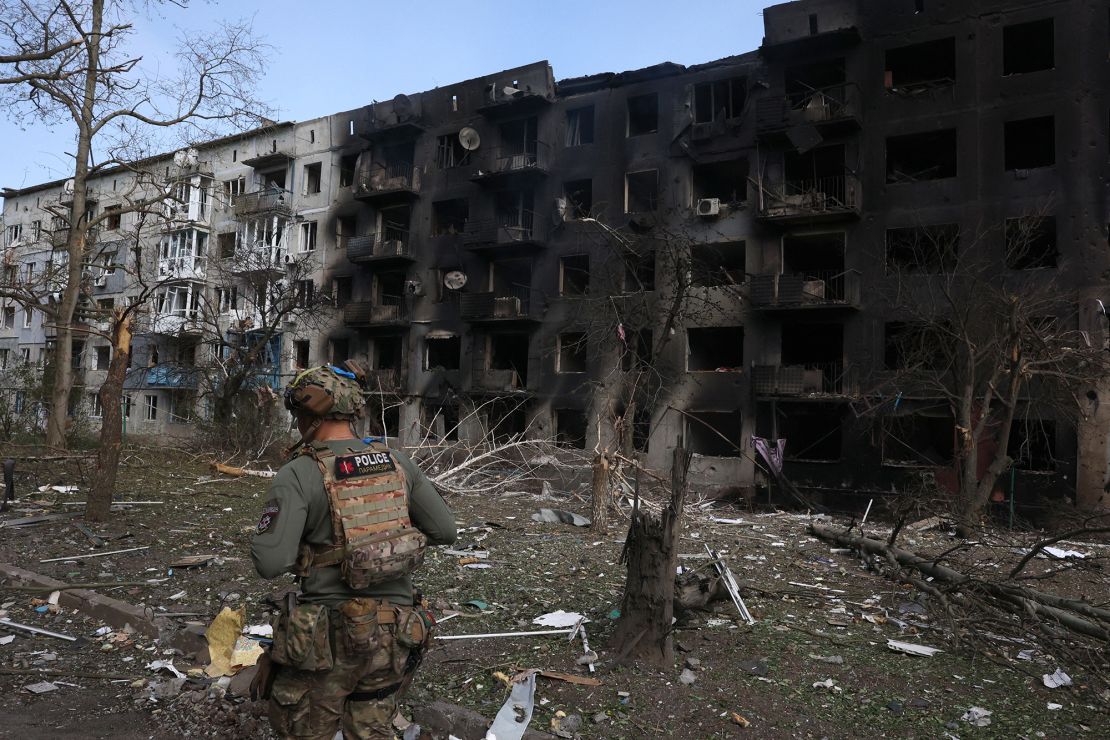
Russian gains there in recent days are just the latest successes for Moscow’s forces, which broke through Ukraine’s defensive lines further to the south around the villages of Tonenke and Orlivka at the end of March.
An officer with Ukraine’s Eastern Command told CNN the Russian offensive in the area was clearly aimed at pushing towards the town of Pokrovsk, a key road intersection about 30 kilometers to the west.
The officer, who asked not to be named because he is not authorised to speak on the record, said that if Russian forces succeeded in gaining and holding Ocheretyne, it could bring vital Ukrainian logistics routes, linking three key military hubs – Kostiantynivka, Pokrovsk and Velyka Novosilka – under Russian fire control.
US aid package vote
An acute shortage of artillery munitions among Ukraine’s armed forces is the primary reason for Kyiv’s frontline withdrawals, as President Volodymyr Zelensky recently told a US interviewer.
“Our artillery ratio is 1 to 10 (in Russia’s favor),” he said, adding that Russian forces are “pushing us back every day.”
Artillery shells are among a sweep of different weapons and armament types Ukraine could expect to receive from the US if Congress approves new military support. Held up in various guises for about six months, a new aid package is expected to come to the floor of the House for a vote on Saturday.
House Speaker Mike Johnson has expressed confidence the bill will pass, telling CNN’s Jake Tapper: “We know what the timetable is… we know the urgency in Ukraine… and we’re going to stand for freedom and make sure that (Russian President) Vladimir Putin doesn’t march through Europe.”
US Defense Secretary Lloyd Austin also appealed to lawmakers to approve the legislation, acknowledging that the battlefield was shifting “in Russia’s favor.”
“We are seeing (Russian forces) make incremental gains, we’re seeing the Ukrainians be challenged in terms of holding the line — they’re doing a very good job, a credible job — but in order to continue to do that, they’re going to need… the right materials, the right munitions, the weapons to be able to do that,” he told the House Defense Appropriations subcommittee. If passed by the House, the bill would still need Senate approval – though that is seen as more likely after the upper chamber gave its support to similar Ukraine aid legislation earlier in the year.
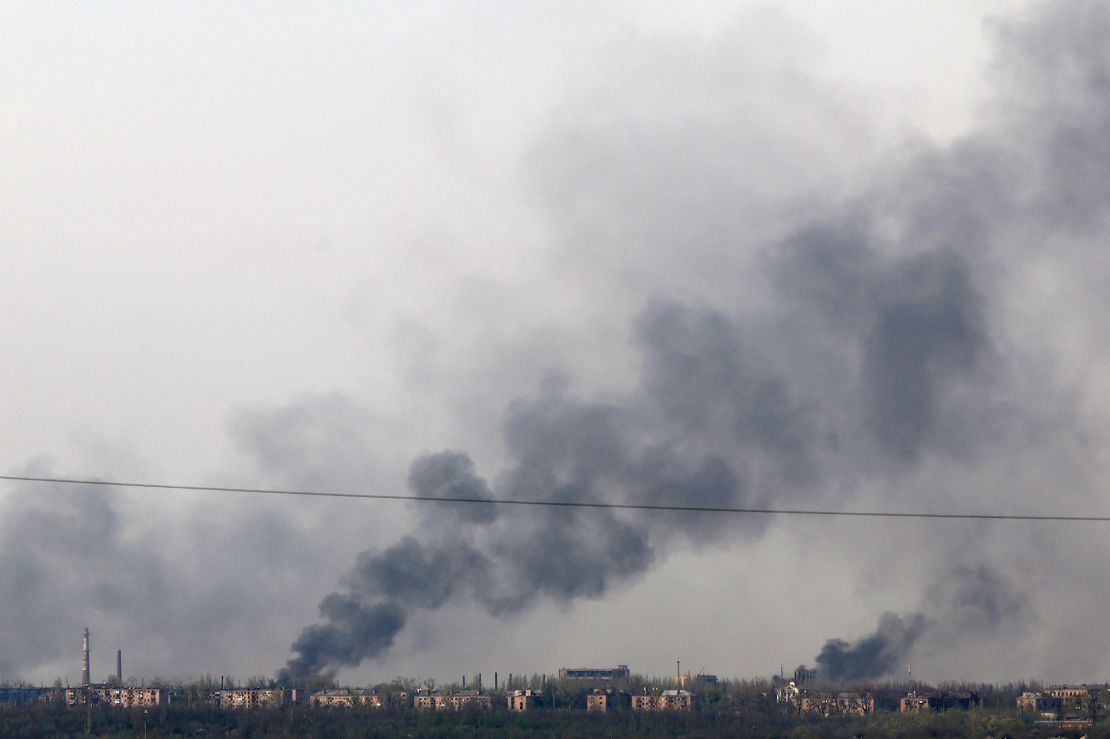
About 40 kilometers (25 miles) north of Ocheretyne, on another piece of higher ground, the town of Chasiv Yar is also firmly in Russian sights. Syrskyi, the Ukrainian Armed Forces chief, has said he believes the Kremlin has ordered its capture by May 9, the day Russia celebrates victory over Nazi Germany in 1945.
Multiple reports describe heavy fighting taking place in an arc of about 120 degrees to the east of the town, taking in villages from Kalynivka to the northeast to Ivanivske and Klishchiivka to the southeast. Some of the battles are taking place in areas recaptured by Ukraine when it went on the offensive last summer.
“The situation around the town of Chasiv Yar is difficult,” Nazar Voloshyn, spokesman for the Ukrainian Ground Forces’ “Khortytsia” operational-strategic group, told CNN. “The enemy is currently using air superiority, missiles, and large-caliber artillery ammunition, trying to reach its goal of reaching the borders of Donetsk region,” he said.
The spokesman described some of the Russian ground tactics, saying that assault groups would sweep forward towards Ukrainian positions, probing for possible weak spots, but then retreat without attempting to secure positions.
Yurii Fedorenko, commander of the “Achilles” drone battalion, part of the 92nd Separate Assault Brigade, agreed that Russian forces had not made significant territorial gains in the last few days but said troops in villages outlying Chasiv Yar were engaged in fierce combat.
“The war is for every house, every street, every intersection. Some positions are changing hands,” he told CNN in a phone conversation from the region. If Russia succeeded in capturing Chasiv Yar, he said, it would bring cities like Kostiantynivka and Kramatorsk under Russian fire control – and represent a major shift in fortunes in Donetsk.
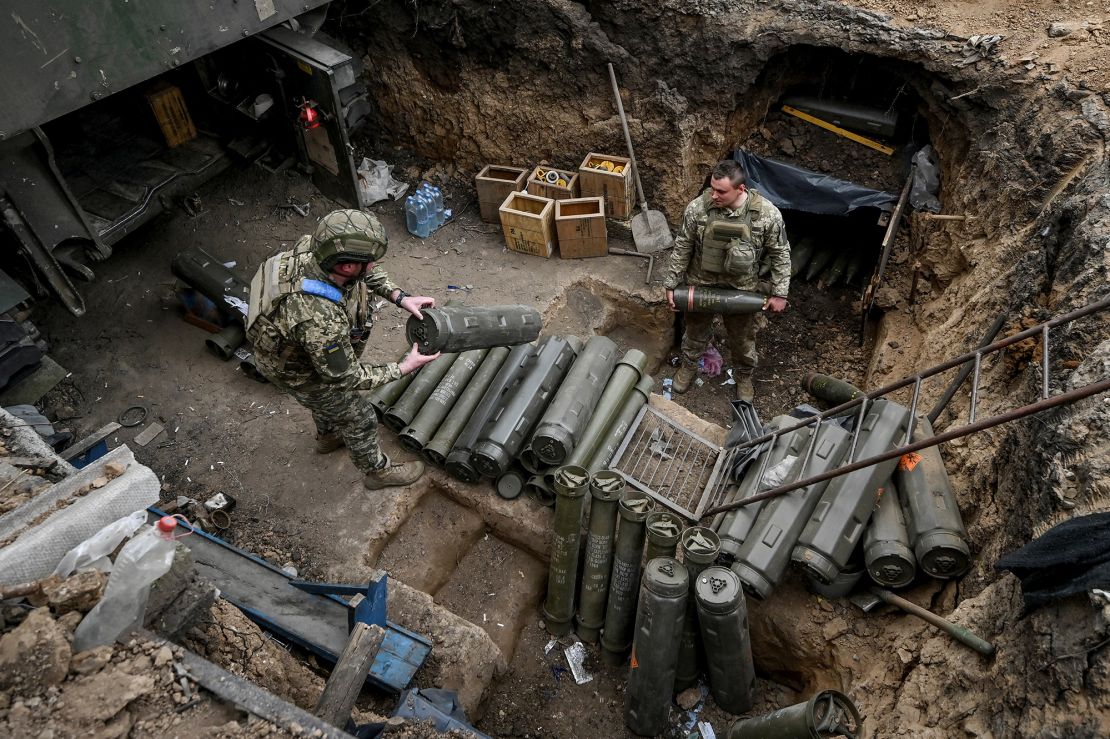
Until it moves to take the town, Russia’s tactics appear clear – to destroy it from the air. Videos posted on pro-Ukrainian Telegram channels show a series of massive explosions in Chasiv Yar, almost certainly caused by FAB guided aerial bombs, which are dropped from Russian aircraft sometimes dozens of kilometers behind front lines.
FAB bombs, which can weigh up to 1.5 tonnes, around half consisting of high explosives, have been used by Russia in ever increasing numbers since they were introduced in the early part of 2023, and have proved devastating in their effectiveness.
“It will not be easy for Russia to take the town, but their conditional advantage is that they will not have the job of preserving the settlement. They will simply demolish it with air strikes after which there will be nothing to defend, just like they did with Mariinka and Avdiivka,” Voloshyn told CNN.
Ukraine’s vulnerability in the face of the FAB threat highlights another huge need for Kyiv – more air defenses. Officials point out that an increase in the number of Patriot systems, for instance, would not just help defend cities like Kharkiv from missile attack but would blunt the threat from Russian warplanes dropping huge bombs on front-line targets like Chasiv Yar.
Zelensky is expected to press key allies to donate more such air defense systems to Ukraine when he addresses defense ministers Friday at a virtual meeting of the Ukraine-NATO Council.
Victoria Butenko contributed to this report.

